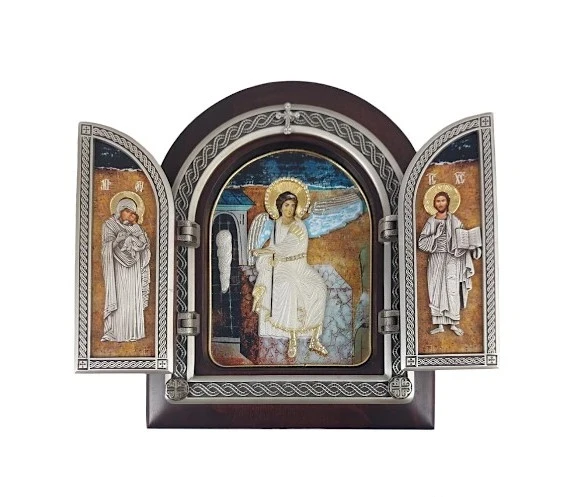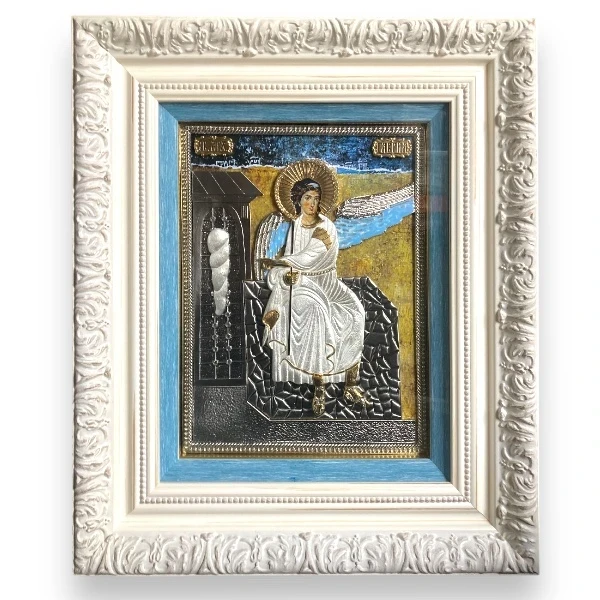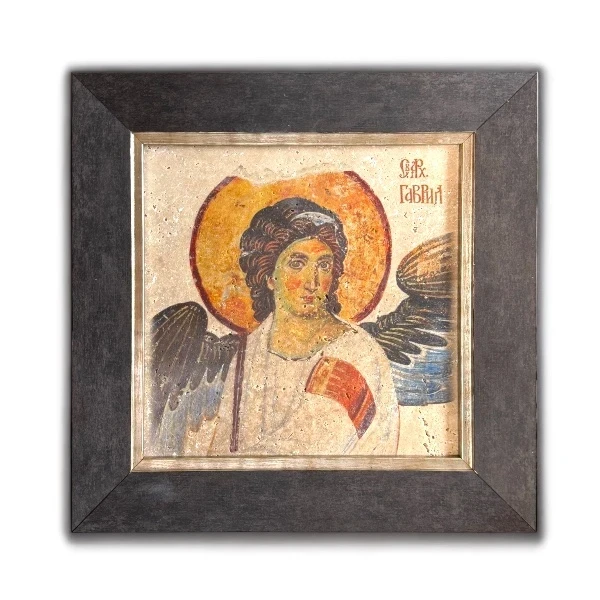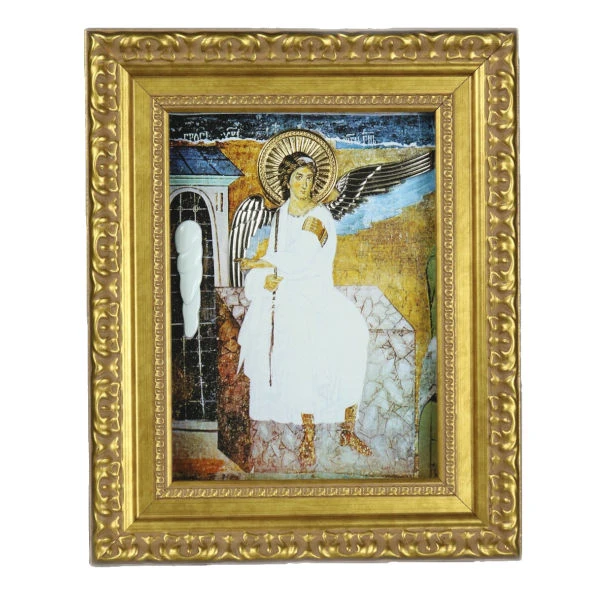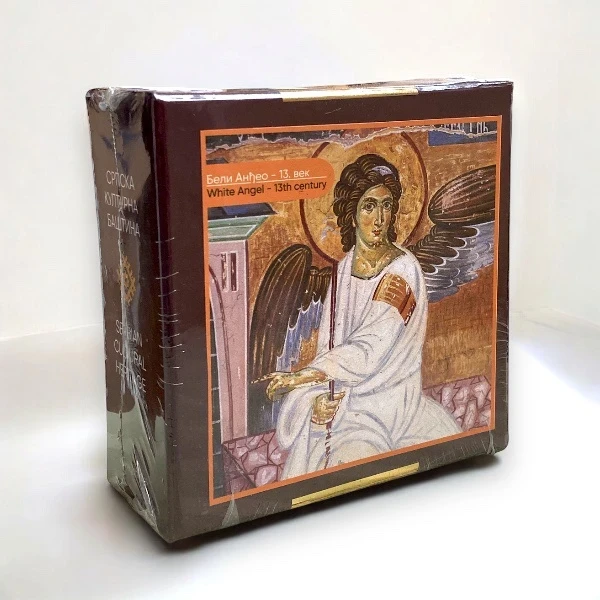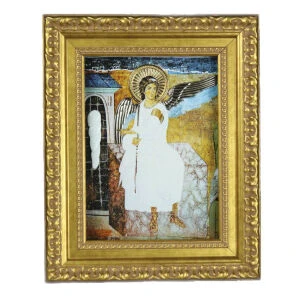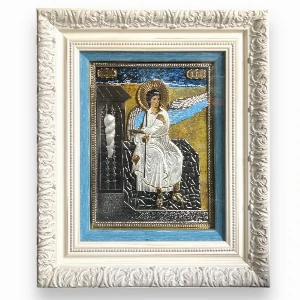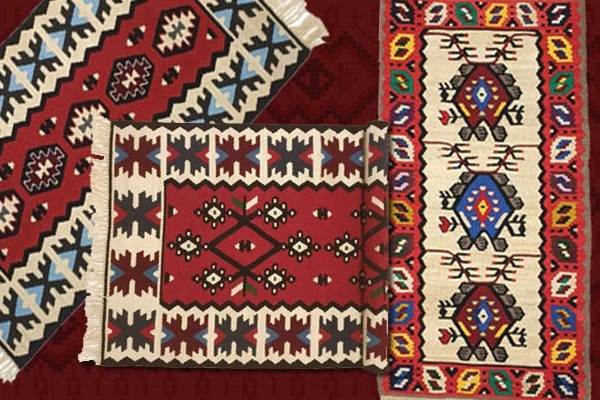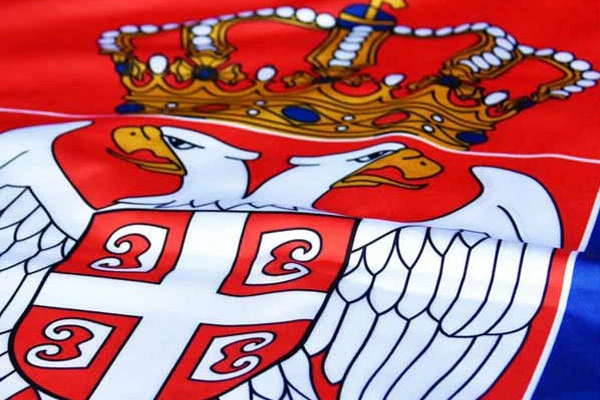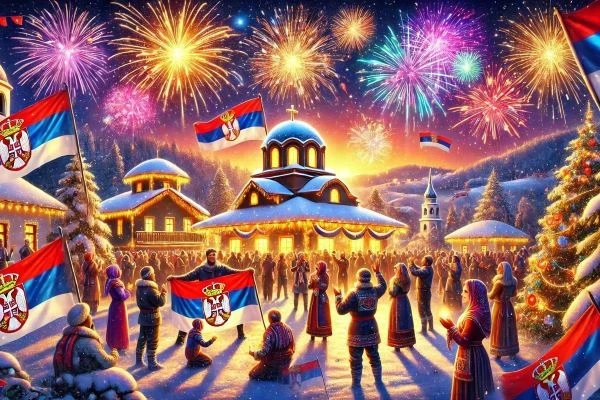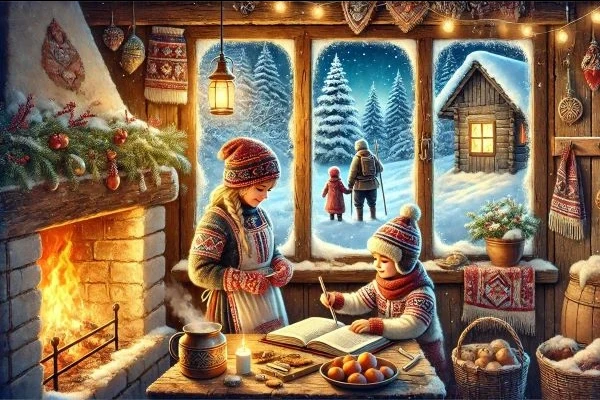White angel - the purest symbol of the Serbian people
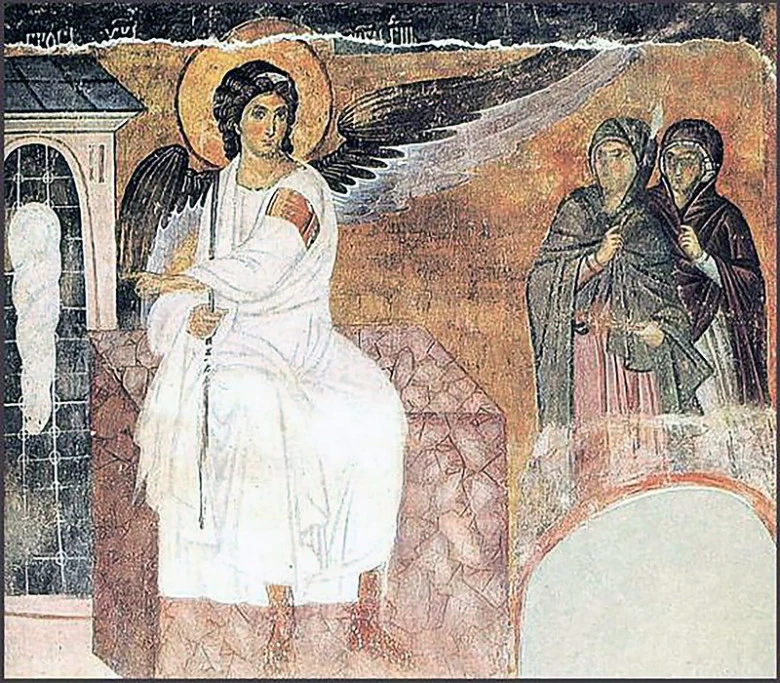
Frescoes represent an artistic segment of religion and as such occupy a special place in the faith of one nation. One of them especially attracts the attention and respect of both Christians and those who are not.
A masterpiece hidden for centuries, reborn to inspire the world.
Throughout history, art has served as a bridge between heaven and earth — and few examples are more powerful than the White Angel fresco from Mileševa Monastery in Serbia. This image, both mystical and serene, captures a moment of divine revelation and continues to move people around the world, regardless of faith.
The Legend of the White Angel
Hidden deep in the valley of the Mileševka River in southwestern Serbia lies a fresco considered by many to be one of the greatest achievements of medieval art — the White Angel, as the people named the serene figure of Archangel Gabriel at Christ’s tomb.
Over the centuries, this image has grown far beyond its painted frame. It has become a symbol of faith, hope, and love — recognized far beyond the borders of Serbia.
The fresco endured turbulent chapters in history. It was forgotten for centuries, only to be rediscovered and restored in modern times. Its beauty has inspired both the devout and the artistic, and its peaceful gaze has carried a universal message to all of humanity.
In the pages that follow, we’ll uncover the story of the White Angel: how it was created, what it represents, how it survived nearly lost to time — and how it became part of a symbolic broadcast across the ocean.
Many say that looking into the eyes of this angel feels like a silent prayer.
A Glimpse Into Eternity
Painted in the 13th century in the Monastery of Mileševa, the White Angel fresco is part of a larger scene depicting the Resurrection of Christ — specifically the moment when Archangel Gabriel greets the Myrrh-bearing women at Christ's empty tomb.
What sets the White Angel apart is not just its religious message, but the deeply human serenity in the angel’s gaze, the elegance of his white robes, and the powerful symbolism of life triumphing over death.
"White Angel" is an iconographic message of peace
The fresco White Angel with its beauty and perfect composition has long impressed lovers of painting and iconography. This fresco is known for the fact that its structure, relationship and composition bring complete harmony, exudes endless faith and hope and conveys the message of love and peace.
The fresco shows the Archangel Gabriel, dressed in a white chiton, with outstretched wings, sitting on a stone and showing the myrrh with his hand the empty tomb of Christ, the place where Christ was resurrected.
"White Angel" represents the voice of the eternal truth about Christ's resurrection, and thus this fresco has taken root in the Serbian people as a synonym for hope, salvation and miracles.
It is not known who the creator of "White Angel" is, but it is believed that it is a group of Byzantine artists.
Mileševa Monastery: Spiritual Heart of Medieval Serbia
Founded by King Stefan Vladislav of the Nemanjić dynasty around 1234, Mileševa Monastery became a major spiritual and cultural center in the Balkans. Its frescoes, painted by Byzantine-trained masters, represent some of the highest achievements of medieval Serbian Orthodox art.
Among them, the White Angel stands as an icon of hope, beauty, and the eternal message of resurrection.

Art That Watches You
One of the fresco’s unique traits is how the angel’s eyes appear to follow you, no matter where you stand. This subtle technique predates Renaissance perspective and adds a mystical quality often compared to the Mona Lisa.
The angel, seated on Christ’s tomb, points calmly to the empty space — a gesture that speaks louder than words: “He is not here. He has risen.”
Message of Peace Across the World
The White Angel became globally known during the Cold War. In the early 1960s, it was reportedly included in the first satellite transmissions between Europe and America — a symbol of peace broadcast to the stars. Though this story carries elements of myth, it reflects the fresco’s status as a universal symbol of peace and faith.
Today, a replica of the fresco is even displayed in the Basilica of Santa Croce in Florence, Italy, alongside the works of Michelangelo and other famous artists.
Lost and Found
Over the centuries, the fresco was hidden beneath layers of plaster — possibly to protect it during the Ottoman period. For four hundred years, it was forgotten. Only in the 20th century did art historians and conservators rediscover the White Angel, carefully restoring it to its original brilliance.
A faint white line above the angel’s head still marks the place where new plaster once covered this sacred image — a scar that tells a miraculous survival story.
The Spiritual and Artistic Value
- Style: High Byzantine with perfect proportions and flowing drapery
- Symbolism: The angel’s white garment represents purity, resurrection, and divine presence
- Emotion: His gaze invites contemplation and personal connection, making viewers feel they are part of the sacred moment
- Innovation: The fresco’s spatial realism predates Renaissance techniques
Some even say that Renaissance art in Europe owes its early inspiration to works like this, long before Italy’s artistic bloom.
Recognizing the beauty, strength and importance, UNESCO has included the Mileseva Monastery and the "White Angel" icon under its protection.
Remembering the appearance of the Archangel Gabriel, the Serbian Orthodox Church celebrates on April 8 and July 26.
Legacy That Transcends Borders
For the Serbian people, the White Angel is more than a fresco. It’s a prayer in color, a messenger of peace, and a cultural treasure protected by UNESCO.
Whether you are a believer, an art lover, or simply curious about the heritage of a small Balkan nation with a big spiritual heart — this icon speaks a language of hope understood across the world.
FAQ – What Visitors Often Ask
Where is the White Angel fresco located?
It is found inside the Mileševa Monastery near the town of Prijepolje, Serbia.
Who painted the White Angel?
The exact artist remains unknown, but it was likely painted by Byzantine iconographers in the 13th century.
Was it really sent into space?
While it wasn’t physically launched, the White Angel image was reportedly part of Europe’s symbolic broadcast to America via satellite — a gesture of peace.
Can I buy a reproduction of the White Angel?
Yes. Serbianshop.com offers several artisan products featuring this powerful image.
Discover White Angel-Inspired Gifts
At Serbianshop.com, you can find authentic reproductions in our collection of the White Angel :
Exclusive Metal Icon – White Angel (42x36cm)
White Angel Triptych (22x18cm)
Icon on Stone (28x28cm)
Small Wooden Puzzle
and many more...
Related products
Read also
How to wash a pirot carpet - 5 steps to a perfectly clean and fragrant carpet
Traditional Serbian carpets are a valuable family heirloom. They refine and…
White angel - the purest symbol of the Serbian people
Frescoes represent an artistic segment of religion and as such occupy a special…
Serbian flags throughout history - What all Serbian flags looked like and what distinguishes them
A flag is much more than a piece of cloth – it is a symbol of a nation's identity,…
Who was Saint Sava and what was his contribution?
"Saint Sava: A Beloved Serbian Saint with a Rich Legacy and Cultural Significance"
…Serbian New Year: Tradition, Customs and How to Celebrate it
The Serbian New Year, also known as the Orthodox New Year, is celebrated on…
Gifts Inspired by Serbian Culture: Authentic Ideas for the Holidays
The holidays are a time of giving, and finding the perfect gift is often a challenge.…
Traditional Serbian Christmas Customs: How to Cultivate Them in Modern Times?
Christmas is the most joyous holiday in Orthodox Christianity, a time when families…
How to Bring the Spirit of Orthodox Tradition into Your Home This Winter?
Winter is the perfect time to bring warmth, togetherness and the spirit of Orthodox…
Serbian Souvenirs: Perfect New Year's Gifts for All Tastes
New Year is the time of giving, and what is more beautiful than a gift that…
How to stay productive and not waste an entire day on Black Friday shopping
Black Friday is a day full of amazing discounts, but it can easily become exhausting…
Folk Beliefs and Customs for Saint Aranđel - Assembly of Holy Angels
Saint Michael the Archangel, who is celebrated…
Folk Beliefs and Customs for Đurđić - Glory of St. George
Đurđić, the feast of St. George, celebrated on November 16, is one of the most…

Apply for newsletter
Sign up for the Serbianshop newsletter and get a 10% discount.


